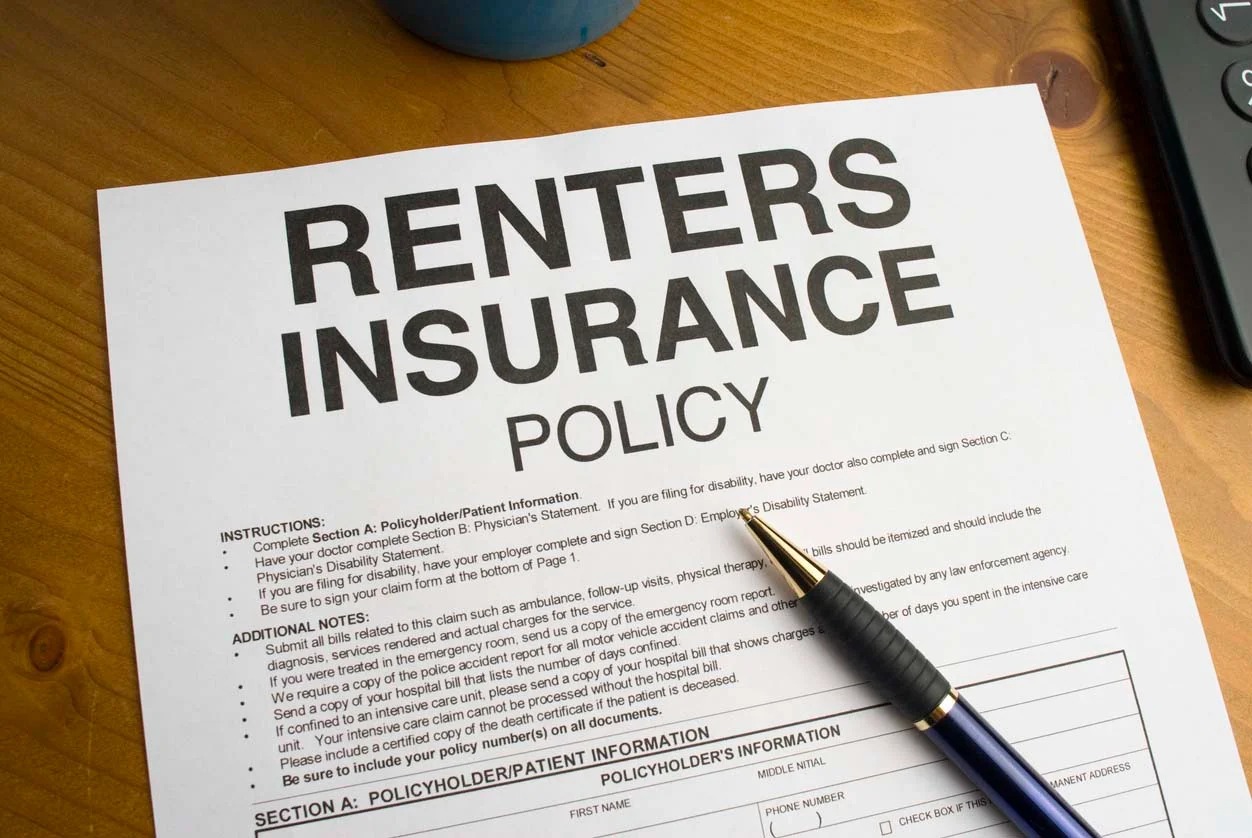

Finance
How To Transfer Renters Insurance
Published: November 21, 2023
Learn how to transfer your renters insurance to a new home and ensure your finances stay protected. Discover step-by-step instructions for a seamless transition.
(Many of the links in this article redirect to a specific reviewed product. Your purchase of these products through affiliate links helps to generate commission for LiveWell, at no extra cost. Learn more)
Table of Contents
- Introduction
- Step 1: Review Your Current Policy
- Step 2: Notify Your Current Insurance Company
- Step 3: Research and Compare New Insurance Options
- Step 4: Transfer or Cancel Your Current Policy
- Step 5: Purchase a New Renters Insurance Policy
- Step 6: Provide Required Documentation
- Step 7: Review and Understand Your New Policy
- Step 8: Notify Your Landlord
- Step 9: Update Your Personal Details
- Step 10: Set Up Payment for Your New Policy
- Conclusion
Introduction
Renters insurance is an important aspect of protecting your personal belongings and liability as a tenant. But what happens when you move to a new rental property? Can you transfer your renters insurance policy to the new location? The answer is yes, but it requires some careful steps to ensure a seamless transition.
In this article, we will walk you through the process of transferring renters insurance from one rental property to another. From reviewing your current policy to notifying your insurance company, researching new options, and updating your personal details, we will cover all the necessary steps you need to take.
Transferring renters insurance can save you both time and money. By carrying over your existing policy to your new rental property, you can avoid the hassle of canceling your old policy and purchasing a new one. Additionally, you may even be able to maintain the same coverage and premium rates, depending on your insurance provider.
So, if you’re planning a move or considering transferring your renters insurance, read on to discover the easy-to-follow steps that will help you navigate this process smoothly and effectively.
Step 1: Review Your Current Policy
Before you begin the process of transferring your renters insurance, it is essential to review your current policy. Take a close look at the coverage limits, deductibles, and any specific conditions or exclusions mentioned in the policy documents.
Understanding the details of your current policy will help you determine if it meets your needs at your new rental property. Consider factors such as the value of your belongings, the risk factors associated with the new location, and any additional coverage you may require.
If your current policy does not provide adequate coverage or if you are unhappy with the terms, this is an opportunity to reassess your insurance needs and find a policy that better suits your requirements. Take note of any changes you would like to make before proceeding to the next steps.
If you have any questions or need clarification about your policy coverage, it is advisable to contact your insurance company or agent. They will be able to explain the terms of your policy and address any concerns you may have.
Remember, having a clear understanding of your current policy is crucial in ensuring a smooth and successful transfer of your renters insurance to your new rental property.
Step 2: Notify Your Current Insurance Company
Once you have reviewed your current policy and decided to transfer your renters insurance to a new rental property, the next step is to notify your insurance company. Contact your insurance provider as soon as possible to inform them of your intention to transfer your policy.
When notifying your insurance company, be prepared to provide them with the details of your new rental property, such as the address and move-in date. This information will help them update your policy and ensure that you have coverage for your new residence.
During the notification process, take the opportunity to inquire about any necessary paperwork or specific steps they may require for transferring your policy. Your insurance company will guide you through the process and provide instructions on how to proceed.
It’s important to notify your insurance company well in advance of your move to ensure a seamless transfer. This will give them enough time to update your policy and ensure there are no gaps in coverage during the transition.
Keep in mind that your insurance company may need some additional information about your new rental property, such as the size, security features, or any unique risks associated with the location. Providing these details will help them accurately assess your needs and make any necessary adjustments to your coverage.
By promptly notifying your insurance company, you can ensure that your renters insurance policy is transferred smoothly and that you have appropriate coverage for your new rental property.
Step 3: Research and Compare New Insurance Options
While transferring your current renters insurance policy to your new rental property is a convenient option, it’s also worth considering whether the policy still meets your needs and if there are better options available. Take the time to research and compare new insurance options to ensure you are getting the best coverage at the most competitive rates.
Start by exploring different insurance providers and their offerings. Look for reputable companies that specialize in renters insurance and have a good track record of customer satisfaction. You can gather information by visiting their websites, reading customer reviews, or seeking recommendations from friends, family, or colleagues.
As you research, pay attention to the coverage options, deductibles, limits, and any additional benefits or discounts offered by each insurance provider. Consider your specific insurance needs, such as protection for high-value items, liability coverage, or specific risks associated with your new rental property.
Make a list of potential insurance providers that meet your criteria and compare their policies side by side. Review their terms and conditions, exclusions, and any additional fees or charges. This will help you make an informed decision and choose the insurance policy that best suits your requirements.
In addition to comparing coverages and premiums, take note of any policy-specific requirements or documentation that may be needed for the new insurance policy. This will help streamline the application process once you have made your decision.
Remember, it’s important to take the time to research and compare different insurance options to ensure you are getting the best coverage at the most competitive rates. By doing so, you can make an informed decision about your new renters insurance policy and have peace of mind knowing you have the right protection in place for your new rental property.
Step 4: Transfer or Cancel Your Current Policy
Once you have researched and selected a new renters insurance policy, it’s time to decide whether you want to transfer or cancel your current policy. This decision will depend on the terms and conditions of your existing policy as well as your personal preferences.
Transferring your current policy to the new rental property is often the easiest and most convenient option. Contact your insurance company and inform them of your decision to transfer the policy. Provide them with the necessary details of your new rental property and follow any instructions they provide. They will make the necessary adjustments to your policy and ensure that you have appropriate coverage in your new location.
Alternatively, you may choose to cancel your current policy and purchase a new one. If this is your preference, contact your insurance company and let them know that you wish to cancel the policy. Be aware that canceling your policy may involve some fees or penalties depending on the terms and conditions outlined in your policy documents. Make sure to inquire about these details and understand the financial implications before making a decision.
If you have already paid for your current policy in advance, inquire about any potential refunds or credits for the unused portion of your policy. Insurance companies may have different policies regarding refunds, so it’s essential to discuss this with them beforehand.
Transferring or canceling your current policy requires clear communication with your insurance company. Make sure to follow their instructions and provide any necessary documentation promptly. By taking care of this step, you can ensure a smooth transition to your new renters insurance policy and avoid any unnecessary complications or gaps in coverage.
Step 5: Purchase a New Renters Insurance Policy
Now that you have made a decision to transfer or cancel your current policy, it’s time to purchase a new renters insurance policy for your new rental property. This step is essential to ensure that you have proper coverage and protection for your belongings and liability.
Refer back to the research you conducted in Step 3 and select the insurance provider that offers the best coverage and suits your needs. Contact the chosen provider either through their website or by phone to initiate the application process.
During the application process, you will be asked to provide information about yourself, the rental property, and the coverage you require. Be prepared to give details such as your name, address, move-in date, estimated value of your belongings, and any additional coverage options you may want, such as replacement cost coverage or added protection for valuable items.
Make sure to carefully review the policy terms and conditions before finalizing the purchase. Pay attention to the coverage limits, deductibles, and any specific exclusions that may apply. If you have any questions or concerns, don’t hesitate to ask the insurance provider for clarification.
Once you are satisfied with the policy terms, complete the purchase process by providing any necessary documentation and paying the premium. Depending on the insurance provider, you may be able to arrange for automatic payments or select a payment option that suits your preferences.
After your new policy is purchased, the insurance provider will issue you a policy document. Review it carefully and store it in a safe place along with your other important documents.
Purchasing a new renters insurance policy is a crucial step in protecting your belongings and liability in your new rental property. By selecting the right coverage and understanding the policy terms, you can have peace of mind knowing that you are adequately protected.
Step 6: Provide Required Documentation
Once you have purchased your new renters insurance policy, the next step is to provide the required documentation to the insurance provider. This documentation is necessary to verify your information and ensure that the policy is valid and in effect.
The specific documentation required may vary depending on the insurance provider and your individual circumstances. However, common documents that are typically requested include:
- Proof of address: This can be a copy of your lease agreement or a utility bill with your name and the new rental property address.
- Proof of identification: This includes a valid government-issued ID such as a driver’s license or passport.
- Inventoried list of belongings: Some insurance providers may require you to provide an inventory of your personal belongings. This can include a detailed list of items, their approximate values, and supporting documentation such as receipts or photographs.
- Proof of prior coverage: If you are transferring your policy, you may be asked to provide proof of your previous renters insurance coverage.
It’s essential to promptly gather and submit these documents to the insurance provider as requested. Failure to provide the required documentation may result in delays in processing your policy or even the cancellation of your coverage.
If you have any questions about the specific documentation needed, reach out to your insurance provider for clarification. They will be able to guide you through the process and provide any necessary assistance.
By providing the required documentation, you ensure that your renters insurance policy is valid and that you have fulfilled all the necessary requirements set by the insurance provider. This step is crucial in securing your coverage and protecting your rented property and belongings.
Step 7: Review and Understand Your New Policy
Once you have provided the required documentation and your new renters insurance policy is in effect, it’s important to take the time to review and understand the policy thoroughly. This step will ensure that you have a clear understanding of your coverage, limits, and any additional terms or conditions.
Begin by carefully reading through the policy document provided by your insurance provider. Pay close attention to the coverage details, including the types of perils covered, the coverage limits for personal belongings and liability, and any deductibles that apply. Take note of any exclusions or limitations mentioned in the policy.
If there are any terms or concepts that you are unsure about, don’t hesitate to reach out to your insurance provider for clarification. It’s important to have a clear understanding of what is covered and what is not, to avoid any surprises or misunderstandings in the event of a claim.
Take note of any specific requirements or obligations outlined in the policy. This may include periodic inspections, security measures, or reporting any changes or updates to the insurance company. Make sure you are aware of these obligations and are prepared to fulfill them to maintain your coverage.
If you find any discrepancies or discrepancies between the policy document and your understanding of the coverage you selected, contact your insurance provider immediately to address any issues or concerns. It’s crucial to ensure that the policy accurately reflects the coverage and terms you agreed upon during the purchase process.
Understanding your new policy will empower you to make informed decisions regarding your insurance coverage. Being familiar with the details of your policy will also help you navigate any potential claims or issues that may arise in the future.
By reviewing and understanding your new renters insurance policy, you can have confidence in your coverage and be prepared to take full advantage of the protection it provides.
Step 8: Notify Your Landlord
After securing your new renters insurance policy, it’s important to notify your landlord about your coverage. While your landlord may not require you to have renters insurance, keeping them informed can help establish open communication and ensure they are aware of your responsible approach as a tenant.
Reach out to your landlord and provide them with the necessary information about your new renters insurance policy. This includes the name of the insurance company, policy number, and coverage details. You can provide this information in writing or during a conversation, depending on the preferred communication method established with your landlord.
In some cases, your landlord may require you to provide a copy of the policy document as proof of your insurance coverage. If this is the case, make sure to provide the requested documentation promptly to avoid any potential issues or misunderstandings.
By notifying your landlord about your renters insurance, you demonstrate your proactive approach to protecting yourself and your belongings while residing in their property. It also helps them understand that in the event of any covered losses, your insurance policy will take care of the necessary financial obligations, reducing the chances of any potential disputes.
Additionally, some landlords may have specific requirements or recommendations regarding renters insurance coverage. They may provide you with additional information about preferred insurance providers or coverage options. It’s essential to consider their suggestions and possibly review your existing policy to ensure compliance with any landlord-specific requirements.
Maintaining open communication with your landlord regarding your renters insurance coverage fosters a positive tenant-landlord relationship and contributes to a harmonious living environment. It helps establish trust and shows your commitment to fulfilling your responsibilities as a tenant.
Step 9: Update Your Personal Details
After purchasing a new renters insurance policy and notifying your landlord, it’s important to update your personal details with the insurance provider. This step ensures that your policy accurately reflects your current information and that you can be contacted promptly in case of any updates or emergencies.
Contact your insurance provider and inform them of any changes to your personal details. This includes updates to your contact information such as your address, phone number, and email address. Providing accurate and up-to-date information is crucial for effective communication and seamless access to your policy.
If you have any changes to your household composition, such as adding or removing a roommate, make sure to inform your insurance provider. They may require additional information about the new member or changes to your coverage based on the new circumstances.
In the event of any significant changes in your life or living situation, such as getting married, having a child, or acquiring valuable assets, consider discussing these changes with your insurance provider. They can help you assess your coverage and make any necessary adjustments to protect your increased liabilities or possessions adequately.
Updating your personal details with your insurance provider is a crucial step in maintaining the accuracy and effectiveness of your renters insurance policy. By ensuring that your policy reflects your current situation, you can avoid any potential difficulties or delays in processing claims or receiving important policy-related communications.
Remember, it’s your responsibility to inform your insurance provider of any changes that may affect your coverage. Promptly updating your personal details ensures that your policy remains relevant and tailored to your needs throughout the duration of your rental agreement.
Step 10: Set Up Payment for Your New Policy
The final step in the process of transferring your renters insurance policy to a new rental property is to set up payment for your new policy. Ensuring that your payments are arranged promptly and securely guarantees that your coverage remains active and valid.
Contact your insurance provider or refer to their website to explore the available payment options. Most insurance companies offer various payment methods, such as electronic funds transfer, credit card payments, or direct debit from your bank account. Select the method that is most convenient and reliable for you.
Set up the recurring payment schedule for your new policy, taking into consideration the frequency (monthly, quarterly, or annually) and the preferred date for payment. It’s essential to adhere to the payment schedule to maintain uninterrupted coverage. Setting up automatic payments can be a convenient and hassle-free option to ensure that your premium is paid on time.
Ensure that you have sufficient funds in your account or on your credit card to cover the premium amount. Missing or late payments can lead to policy cancellation or a lapse in coverage, leaving you unprotected in case of an unfortunate event.
If you encounter any challenges or technical issues while setting up the payment, reach out to your insurance provider’s customer service for assistance. They will be able to guide you through the process and help resolve any payment-related concerns or queries.
Regularly review your bank or credit card statements to confirm that the premium payments are being deducted as expected. If you notice any discrepancies or issues with the payment, promptly contact your insurance provider to rectify the situation.
By setting up payment for your new renters insurance policy, you ensure that your coverage remains in force and provides the protection you need for your new rental property. Taking care of this final step completes the process of transferring your policy and allows you to have peace of mind knowing that you are properly covered.
Conclusion
Transferring your renters insurance policy to a new rental property is a crucial step in ensuring that your belongings and liability are adequately protected. By following the ten steps outlined in this article, you can navigate the process smoothly and seamlessly, saving time and money in the process.
The process begins with reviewing your current policy and assessing its suitability for your new rental property. Next, you notify your current insurance company about your intention to transfer or cancel the policy. Researching and comparing new insurance options allows you to find the best coverage and rates available in the market.
Once you have chosen a new policy, remember to provide the required documentation to the insurance provider and carefully review the terms and conditions of your new policy. Informing your landlord about your coverage demonstrates your responsibility as a tenant and helps establish open communication.
Updating your personal details and setting up payment for your new policy ensures that your coverage is accurate and uninterrupted. Taking these steps ensures that you are adequately protected throughout your tenancy in the new rental property.
Remember, renters insurance is a vital investment that protects you, your belongings, and your financial security. It’s crucial to regularly review and reassess your insurance needs to ensure that your coverage aligns with your current circumstances.
By following these steps, you can seamlessly transfer your renters insurance policy to your new rental property, providing you with the peace of mind and security you deserve. Protect what matters most and enjoy your new living space with the knowledge that you have the right insurance coverage in place.














